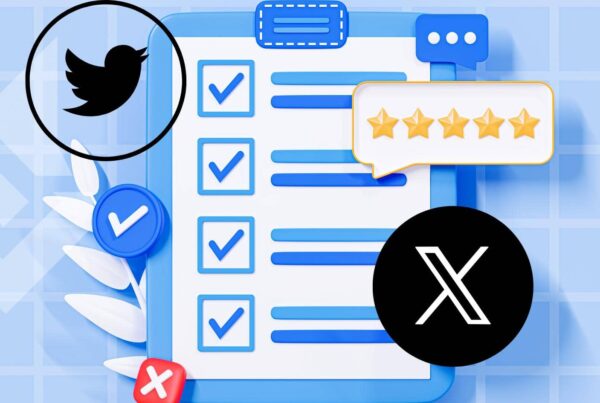TikTok has become one of the most influential platforms for marketing, with millions of users consuming and sharing content daily. For businesses, it has been a goldmine for brand visibility, engagement, and direct-to-consumer interaction. But what happens if TikTok is no longer part of the equation? With the potential TikTok ban 2025 looming, businesses need to prepare for significant shifts in how they market and connect with their audiences. In this article, we’ll explore why the TikTok ban is being discussed, how it could disrupt marketing strategies, and what businesses can do to stay ahead.
TikTok’s Dominance in Marketing
TikTok has revolutionized marketing by offering a platform where creativity and authenticity drive success. Its unique algorithm allows even small accounts to go viral, making it an equal-opportunity tool for businesses. Brands have used TikTok to launch challenges, trends, and campaigns that resonate with audiences on a deeper, more personal level.
Statistics highlight its dominance. TikTok boasts over 1 billion monthly active users, with an average session lasting nearly 11 minutes. For marketers, this means unparalleled engagement. For example, the #TikTokMadeMeBuyIt trend showcased how user-generated content could directly influence purchasing decisions, with products selling out within hours of being featured.
Industries like beauty, retail, and tech have seen particularly high returns from TikTok campaigns. From Sephora’s tutorials to Nike’s viral challenges, the platform has proven its value as a key driver of brand growth. But with the potential TikTok ban 2025 on the horizon, businesses must ask themselves: What’s next?
Why is TikTok Facing a Ban in 2025?
The TikTok ban 2025 isn’t coming out of nowhere. Governments worldwide have raised concerns about data privacy, national security, and the platform’s potential influence on public opinion. TikTok’s parent company, ByteDance, has faced scrutiny over allegations that it could share user data with foreign governments, particularly China.
In the U.S., legislation aimed at curbing TikTok’s influence has gained momentum. Several bills propose banning the app outright unless it meets stringent data-handling requirements. These concerns are not new; India banned TikTok in 2020 over similar issues, and the app is already prohibited on government devices in countries like the U.S., Canada, and the U.K.
The broader context involves increasing government oversight of tech platforms. TikTok is part of a larger conversation about how apps collect, store, and use personal data. With these trends escalating, the likelihood of the TikTok ban 2025 becomes more plausible every day.

The Ripple Effect on Marketing Strategies
If TikTok is banned, it will leave a significant gap in marketing strategies across industries. Businesses that rely heavily on the platform will need to pivot quickly to maintain their reach and engagement.
- Loss of a High-Impact Marketing Channel
TikTok’s short-form video format has become synonymous with modern marketing. It allows brands to create engaging, relatable content that resonates with audiences. Without TikTok, businesses will lose this direct line of communication, forcing them to explore less effective alternatives. - Increased Competition on Other Platforms
Platforms like Instagram Reels, YouTube Shorts, and Snapchat Spotlight will see a surge in new users and advertisers. This influx will drive up advertising costs, making it harder for businesses, especially small ones, to compete. - Challenges for Small Businesses
Small businesses, which often rely on TikTok’s organic reach and low-cost advertising options, will face the greatest challenges. Many will need to allocate resources to rebuild their audience on other platforms, a process that could take months or even years.
Broader Business Impacts Beyond Marketing
The TikTok ban in 2025 could have ripple effects that extend beyond marketing departments. Customer engagement could take a hit as brands lose access to a platform that fosters direct, authentic connections with audiences. Gen Z and Millennials, in particular, may feel disconnected from brands, as TikTok is their preferred platform for discovery and interaction.
Additionally, TikTok has been a space for innovation. Brands use the platform to test new ideas, trends, and campaigns. Without this creative playground, businesses may struggle to maintain the same level of innovation. Revenue is another concern; TikTok’s ad capabilities and in-app shopping features contribute to significant sales for many businesses. Replacing these revenue streams will be no small feat.

How Businesses Can Adapt to the TikTok Ban in 2025
While the potential TikTok ban poses challenges, it also provides an opportunity for businesses to rethink and diversify their strategies. Proactive preparation will be key to mitigating its impact.
- Diversify Your Marketing Channels
Businesses should begin expanding their presence on alternative platforms like Instagram, YouTube, and Snapchat. Emerging platforms could also fill the void, offering new opportunities for early adopters. Building a cross-platform strategy ensures that your brand remains visible, even if TikTok disappears. - Focus on Owned Media
Owned media channels such as email lists, blogs, and websites provide a stable foundation that isn’t affected by platform bans. Investing in these channels can help businesses maintain direct connections with their audience. - Strengthen Your Content Strategy
Repurpose TikTok-style content for use on other platforms. Focus on creating content that is platform-agnostic, ensuring it can be shared across multiple channels without losing its appeal. - Invest in Community Engagement
Building a loyal community is more important than ever. Brands should focus on fostering genuine connections with their audience through social media, newsletters, and even in-person events.
Platforms to Consider if TikTok is Banned
In light of the potential TikTok, businesses must diversify their social media presence to maintain audience engagement and brand visibility. Here are key platforms that can serve as effective alternatives:
- Instagram Reels: With its short-form video feature, Reels is a natural choice for TikTok-style content. Its integration with Instagram’s broader ecosystem allows businesses to reach a wide audience while maintaining visual consistency with their existing posts.
- YouTube Shorts: Perfect for engaging, bite-sized videos, YouTube Shorts offers businesses access to YouTube’s massive user base. It’s an excellent platform for repurposing TikTok content and capitalizing on the power of video searchability.
- Snapchat Spotlight: Spotlight focuses on user-generated, short-form video content. Its strong appeal to younger demographics makes it an ideal option for brands targeting Gen Z audiences.
- Triller: This app emphasizes music and creativity, offering businesses a chance to experiment with artist collaborations and trend-based content.
- Lemon8: Owned by ByteDance, Lemon8 blends Instagram’s visual focus with Pinterest’s lifestyle appeal. It’s ideal for brands in fashion, travel, and wellness. However, businesses should be cautious of its potential for similar regulatory scrutiny as TikTok due to shared ownership.

Opportunities for Marketing in a Post-TikTok World
The TikTok ban 2025 may seem like a setback for businesses, but it also opens doors to fresh opportunities. Without TikTok dominating the marketing landscape, brands can explore new platforms, strategies, and technologies to connect with their audiences in innovative ways.
- Adapting to New Platforms
The absence of TikTok creates space for emerging platforms to gain traction. Brands can pivot to alternatives like Instagram Reels, YouTube Shorts, and Snapchat Spotlight, leveraging their short-form video expertise to maintain audience engagement. - Investing in Owned Media
Businesses have an opportunity to strengthen their presence on owned channels, such as websites, blogs, and email lists. These platforms provide stability and ensure brands aren’t vulnerable to future platform-specific changes. - Focusing on Data Privacy and Trust
As data privacy becomes a bigger priority, businesses can align with platforms that emphasize transparency and user protection. This not only builds consumer trust but also positions brands as socially responsible. - Diversifying Ad Strategies
With TikTok off the table, brands can explore smaller ad platforms and alternative networks. This diversification reduces over-reliance on a single platform and ensures a more balanced, resilient marketing strategy.
The TikTok ban may force businesses to rethink their strategies, but those who adapt quickly can discover new ways to engage audiences and achieve long-term growth.
Conclusion
The TikTok ban 2025 has the potential to dramatically reshape the marketing landscape. For businesses, it serves as a reminder of the importance of adaptability and diversification. While TikTok’s loss would be significant, proactive preparation can help brands navigate this challenge and find new opportunities for growth. Is your business ready for the changes ahead? Contact us today to develop a marketing strategy that ensures your success in a post-TikTok world.




